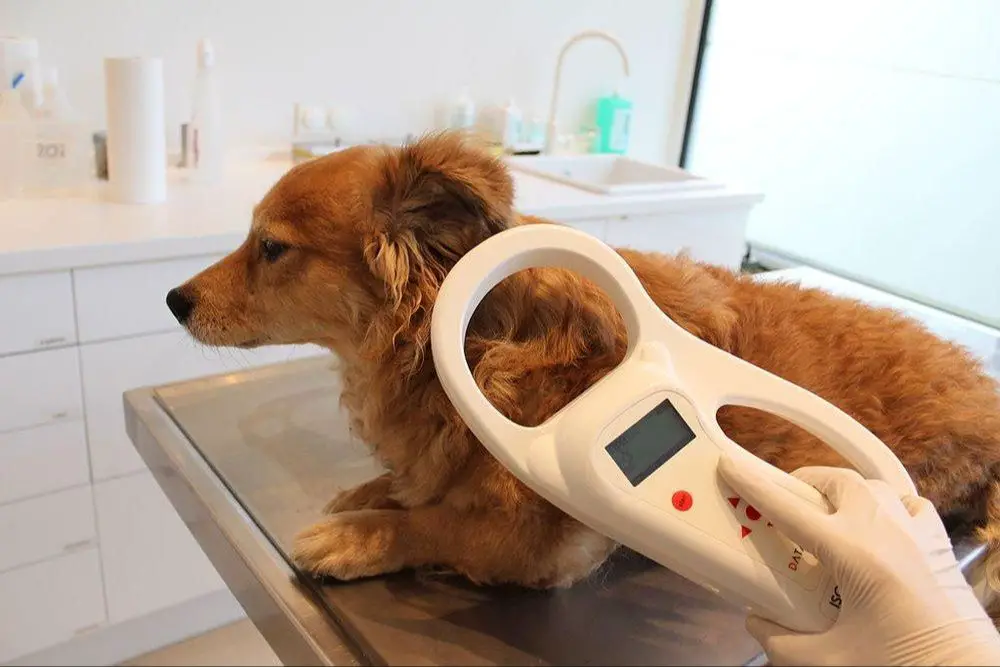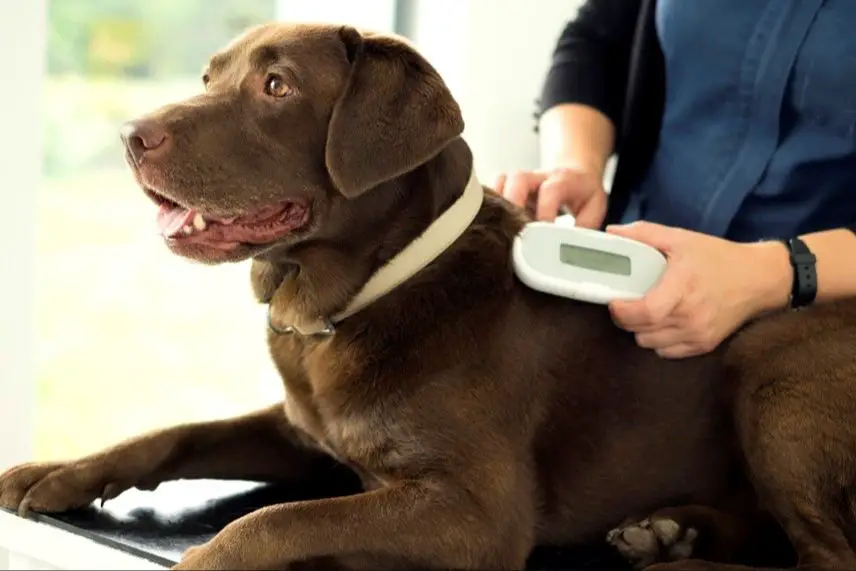Introduction
Microchipping is a common procedure used to identify dogs and cats. It involves implanting a grain-sized microchip under the pet’s skin, usually between the shoulder blades. The microchip contains a unique identification number that can be detected by a scanner. Microchipping provides permanent identification for pets in case they become lost or separated from their owners.
While microchipping is an important first step, it is crucial that pet owners also register their pet’s microchip information in a database. Registration links the microchip ID to the owner’s contact information, allowing shelters and veterinarians to quickly reunite lost pets with their owners. Without registration, a microchip is useless – scanners will detect the chip but there will be no owner information associated with it. Registration provides the key linkage between microchip and owner.
Overall, microchipping combined with registration greatly increases the chances of reuniting lost or stolen pets with their families. But the microchip must be registered to be effective, so proper registration is vital.
Microchipping Procedure
Microchips are typically implanted in dogs through a quick and simple injection. A veterinarian or trained technician will first scan the dog to ensure it does not already have an existing microchip. The microchip itself is contained in a small glass capsule that is encoded with a unique identification number. It is loaded into a needle insertion device and then injected under the loose skin between the dog’s shoulder blades. The process only takes a few seconds and most dogs tolerate it very well.

There are different brands and types of microchips available. Some of the major manufacturers include Avid, HomeAgain, 24PetWatch, and AKC Reunite. The microchips themselves are about the size of a grain of rice but the technology inside allows each one to have a distinct identification number. Microchips use RFID or NFC technology to transmit this number when scanned by a compatible reader. They are designed to last for the lifetime of a dog without any battery or power source needed.
Registering the Microchip
When a veterinarian implants a microchip in a dog, the microchip itself contains only a unique identification number. It does not actually contain any information about the dog or its owner. In order for the microchip to be useful in identifying and reuniting lost dogs with their owners, the microchip must be registered in a pet recovery database.
The registration process involves providing the database company with details about the dog and its owner to associate with the microchip. This typically includes the dog’s name, breed, physical description, veterinarian information, and most importantly, the owner’s contact information like name, address, phone number, and email. This contact information is stored in the database linked to the microchip’s identification number.
Most veterinarians provide microchip registration paperwork when they implant the chip. Responsible pet owners complete the registration form and mail it to the database company or register online right away. This allows the microchip to immediately help identify a lost dog and its owner if needed.
Unregistered Microchips

When a dog is microchipped, the microchip is implanted under the dog’s skin, usually between the shoulder blades. This provides permanent identification of the dog. However, the microchip itself does not contain any owner information. The microchip only contains a unique number that must be registered in a database along with the owner’s contact details.
If a microchip is not registered to an owner, the microchip essentially becomes useless. When a dog with an unregistered microchip gets lost and is found by someone else, the chip cannot be scanned to identify the dog or reunite it with its owner. Without that registration, the microchip remains anonymous and disconnected from any owner information.
This makes it extremely difficult or even impossible to get a lost dog back to its original owner if the microchip is not registered. The dog may end up being put up for adoption or euthanized if the original owner cannot be located. Properly registering the microchip is therefore crucial to being able to reconnect dogs and owners if a dog ever gets lost or stolen.
Scanning Unregistered Chips
When a dog with an unregistered microchip is found, the first step is to scan the chip. Most veterinary clinics, animal shelters and animal control facilities have universal microchip scanners that can detect and read most standard chips. The scanner is passed over the area where the microchip is implanted, usually along the back of the neck/scruff area.

Once the microchip is detected, the unique identification number associated with that chip is displayed on the scanner. The staff member or veterinarian will then look up that microchip number in the various pet recovery databases that cross-reference microchips with owner information. However, if the microchip is unregistered, there will be no owner information associated with that chip number.
Without a registered name and contact information tied to the microchip, it becomes much more difficult to reunite a lost pet with its owner. Shelter staff or veterinarians have no way to identify or contact the owner of an unregistered microchipped pet.
Reuniting Lost Dogs
When a dog with an unregistered microchip is found, it can be very challenging to reunite them with their owner. Without registration information linked to the microchip number, shelters have no way of contacting the dog’s owner when the chip is scanned.
Shelters will often post photos of the lost dog online or in local classifieds hoping someone recognizes them. They may also check with local vets to see if they have records of the dog in their system. But this process relies on luck and the good will of strangers to identify the dog and track down the owner.
Oftentimes, dogs with unregistered chips end up never being reunited with their families. The owners have no way of knowing their lost pet has been found and is waiting at a shelter. Meanwhile, shelters can only hold animals so long before putting them up for adoption if an owner doesn’t surface.
Registering chips provides a direct link between a lost dog and their human. Shelters can call the number in the registry and contact the owner right away to arrange a reunification. Without registration, the chances of reuniting a lost dog with their family diminishes greatly.
Importance of Registration
Registering your dog’s microchip is critical for increasing the chances of being reunited if they become lost. Studies show extremely high rates of lost dogs being returned to their owners when the microchip is properly registered in a database. One 2011 study found that the return-to-owner rate for dogs with registered microchips was over 90%, compared to just around 50% for dogs without a microchip.

Another huge benefit of registering your pet’s chip is that it enables much faster reunification when they are lost. Shelters or veterinarians can quickly use the microchip number to look up your contact information and get your dog back home. This immediate access to owner info allows for reunions within hours or days rather than weeks. Unregistered chips require shelters to go through a lengthy process of contacting microchip companies to try and track down owner info.
Overall, properly registering your dog’s microchip vastly increases the chances of getting them back home safely if they ever wander off and provides peace of mind to pet owners. Maintaining up-to-date contact information is crucial as well to enable fast reunification.
Updating Contact Info
One of the most important aspects of having your pet microchipped is keeping your contact information current with the microchip company. If you move or change phone numbers after your pet is microchipped, you need to notify the microchip company right away to update your info in their database.
The microchip is useless if the company has outdated contact details for you. If your pet ever gets lost and someone scans the microchip, they need to be able to reach you and get your pet back home. Don’t let a simple move or phone number change result in your lost pet never being returned to you. Stay diligent in notifying the microchip company of any contact info changes.
Low Registration Rates
Despite the benefits of microchip registration, studies show that a surprisingly high percentage of microchipped pets never get registered by their owners. According to the American Humane Society, as many as 90% of dogs with microchips may not be registered with current owner information. This renders the microchip virtually useless if the pet gets lost. Organizations like the American Veterinary Medical Association (AVMA) have launched public awareness campaigns to educate pet owners about properly registering new microchips. Local humane societies also make an effort to check for microchips and get pets registered whenever they take in an animal. However, a cultural shift is still needed to get registration rates higher. Vets emphasize discussing the registration process with pet owners at the time of the microchipping procedure.
Conclusion
To recap the main points, microchipping is a valuable tool for identifying lost dogs, but leaving microchips unregistered significantly limits their effectiveness. When an unregistered microchip is scanned, there is no owner information linked to that chip number, making it extremely difficult to reunite the dog with its owner.
The takeaway is clear: it is absolutely critical to register your dog’s microchip and keep the registration information up-to-date. The microchipping process itself is quick and straightforward, but leaving that chip unregistered renders it virtually useless. Just taking those extra steps to register the microchip and updating your contact details whenever you move or change phone numbers can make all the difference in reuniting with your lost pet.
In conclusion, microchipping provides peace of mind, but only if you complete the process by properly registering your dog. Don’t let an unregistered microchip give you a false sense of security. Be a responsible pet owner and give your dog the best chance of finding its way home by registering its microchip today.